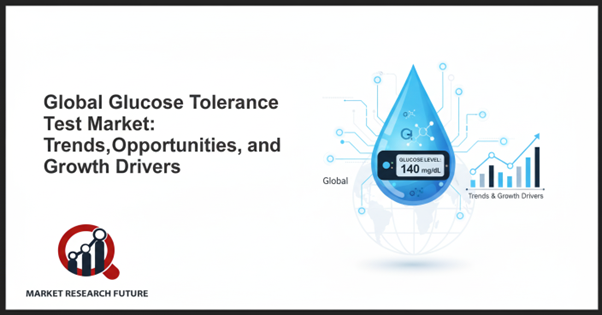Global Glucose Tolerance Test Market: Trends, Opportunities, and Growth Drivers

The Glucose Tolerance Test (GTT) market is witnessing steady growth, driven by the rising prevalence of diabetes and other metabolic disorders globally. This test, which measures the body’s response to sugar intake, is crucial for diagnosing prediabetes, diabetes, and gestational diabetes.
With increasing health awareness and technological advancements, the market is poised for significant expansion in the coming years.
Glucose Tolerance Test Market Trends
One key trend shaping the GTT market is the growing adoption of home-based and point-of-care testing devices. Modern diagnostic solutions allow patients to monitor their glucose levels conveniently, reducing the need for repeated hospital visits. Additionally, integration of digital tools and mobile apps is enhancing test accuracy and enabling remote monitoring by healthcare professionals.
Another important trend is the shift towards non-invasive and rapid testing methods. Researchers and manufacturers are developing advanced solutions that reduce discomfort and provide quicker results, improving patient compliance. The rise of wearable devices capable of continuous glucose monitoring is also influencing market dynamics.
Opportunities in the Glucose Tolerance Test Market
The increasing global burden of diabetes presents significant opportunities for the GTT market. According to the International Diabetes Federation, diabetes cases are expected to rise sharply, particularly in developing regions. This trend is creating demand for affordable and reliable testing solutions.
Emerging markets in Asia-Pacific, Latin America, and the Middle East offer substantial growth potential due to improving healthcare infrastructure and rising awareness about metabolic disorders. Companies focusing on innovative products, cost-effective solutions, and localized distribution networks can capitalize on these opportunities.
Furthermore, collaboration with hospitals, clinics, and telemedicine platforms can expand the reach of GTT services. Awareness campaigns emphasizing early detection and preventive care also open avenues for market growth.
Glucose Tolerance Test Market Growth Drivers
The primary driver of market growth is the rising prevalence of diabetes and obesity worldwide. Sedentary lifestyles, unhealthy diets, and aging populations are contributing factors. As a result, the demand for early and accurate diagnosis through tests like GTT is increasing.
Technological advancements are another crucial driver. Automation, digital integration, and improved testing kits are making glucose monitoring easier, faster, and more reliable. Government initiatives promoting diabetes screening and preventive healthcare are further fueling market expansion.
Lastly, increasing health awareness among individuals is prompting routine check-ups and preventive testing. People are more conscious of their long-term health, and this behavior supports the adoption of glucose tolerance testing.
Global Glucose Tolerance Test Market Final Thoughts
The global Glucose Tolerance Test market is on a growth trajectory, driven by rising diabetes prevalence, technological innovations, and increasing health awareness.
With significant opportunities in emerging regions and continued advancements in testing methods, the market is expected to witness robust expansion in the coming years.